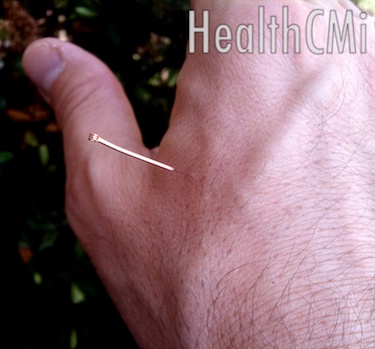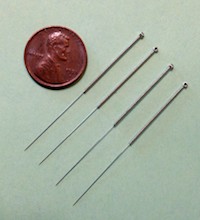Acupuncture reduces high blood pressure for patients with hypertension. In a surprising result, acupuncture was found more effective than a pharmaceutical medication commonly used for the treatment of high blood pressure and heart failure. Additionally, acupuncture was clinically successful in controlling symptoms associated with high blood pressure including dizziness, aching of the waist and knees, and palpitations. 
Researchers conducted a randomized controlled study and divided 60 patients with hypertension into two groups. Group 1 received acupuncture. Group 2 received the drug catopril, an antihypertensive and renal protective agent given the trade name Capoten. The drug is an ACE (angiotensin-converting enzyme) inhibitor. Common uses for catopril include the treatment of hypertension, congestive heart failure and protection of kidney function for diabetics.
All acupuncture patients in group 1 received a standardized, protocolized acupuncture point prescription. The acupuncture point selection was Hegu (LI4), Taichong (LR3), Quchi (LI11) and Xingjian (LR2). LI4 and LR3 are commonly paired in treatment protocols and this pairing is given the name Siguan, translated as four gates.
Both groups showed significant reductions in blood pressure. However, the acupuncture group showed greater improvement. Measurements of diastolic blood pressure at 14 days and 21 days into the treatment regime revealed that the acupuncture group showed greater diastolic reductions. The same was true for improvement of symptoms associated with hypertension. The acupuncture group demonstrated clinical superior patient outcomes for reductions in dizziness, aching of the waist and knees, and palpitations. Moreover, the acupuncture group demonstrated less adverse reactions than the drug group. This last result is not surprising since adverse events associated with catopril intake include light-headedness, fainting, dizziness, abnormal frequency of urination, bodily pain, fever, chills, abnormal bleeding (vagina, mouth, nose, rectum), difficulty concentrating and shortness of breath. Based on the findings, the researchers concluded that acupuncture is safer and more effective than catopril for the treatment of hypertension.
The Traditional Chinese Medicine (TCM) differential diagnosis for all patients admitted to this study was hypertension due yin deficiency with excess yang uprising.  This type of hypertension is characterized by a small, wiry, rapid pulse often accompanied by a red tongue with a yellow coating. There may be headaches, light-headedness, irritability, burring of vision and dizziness in addition to high blood pressure. The acupuncture point prescription was chosen based on this differential diagnosis. As a result of the study’s findings, acupuncture was determined to be both safe and effective for lowering high blood pressure and reducing symptoms associated with hypertension due to yin deficiency with yang uprising type hypertension.
This type of hypertension is characterized by a small, wiry, rapid pulse often accompanied by a red tongue with a yellow coating. There may be headaches, light-headedness, irritability, burring of vision and dizziness in addition to high blood pressure. The acupuncture point prescription was chosen based on this differential diagnosis. As a result of the study’s findings, acupuncture was determined to be both safe and effective for lowering high blood pressure and reducing symptoms associated with hypertension due to yin deficiency with yang uprising type hypertension.
Reference:
Xie, B., and Y. P. Lin. "[Efficacy observation on acupuncture for essential hypertension of yin deficiency due to yang hyperactivity pattern]." Zhongguo zhen jiu= Chinese acupuncture & moxibustion 34, no. 6 (2014): 547-550.


